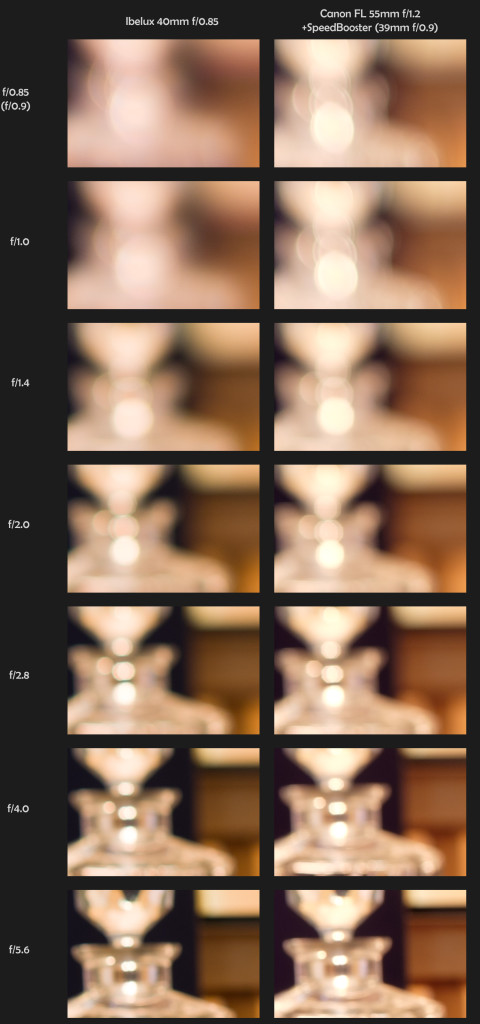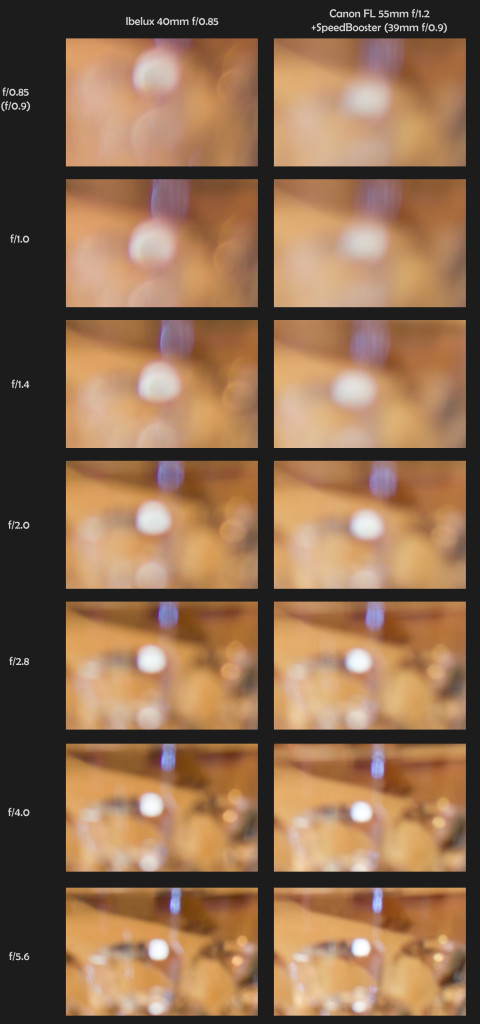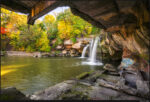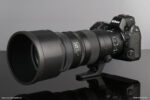Bokeh
For the bokeh comparison, 100% crops were taken from the neck of the crystal decanter in the background, and the top of the crystal glass in the foreground. As with the sharpness crops, click on an image, then click the green arrow at the bottom of the screen to enlarge the image to full size.


Here things shift a bit. In the more important background bokeh crops, the Ibelux shows significantly smoother bokeh at wide apertures. So smooth it’s actually hard to see where the blur discs begin and end, though there is a slight outline on the left edge of the specular highlights. The Canon shows a much harsher rendering, with prominent bright ring outlines on specular highlights.
Once the lenses are stopped down a bit, the bokeh becomes quite similar between the two. The Ibelux maintains slightly rounder highlights due to the 10 bladed aperture (vs. 8 on the Canon), but also shows much more prominent green outlining from longitudinal chromatic aberration at smaller apertures.
In the foreground bokeh test, the Canon is clearly superior, with a softer rendering overall that continues through the aperture range, though again the lenses become quite close once they reach f/2.8.
Conclusion:
Well, it’s not a fully clear-cut win, but I’d say overall, the Canon 55mm f/1.2 + Speed Booster takes the crown. It’s sharper in the center and the edges at all apertures, has better foreground bokeh and similar background bokeh from f/2 onward. Combined with the better distance performance (not shown here), the significantly lighter weight and the massive difference in cost, it’s the much more sensible solution for those wanting a 40mm ultra-fast lens on APS-C.
That said, the bokeh on the Ibelux combined with the soft glow produces a really beautiful rendering that the Canon can’t match. In that situation, the Ibelux proves superior, but I don’t think very many people would consider that advantage worth the other disadvantages and the $1400 cost differential. However, look for my full review of the Ibelux 40mm f/0.85, which will be coming up very shortly, to see how it handles all sorts of different situations.





Leave a Reply